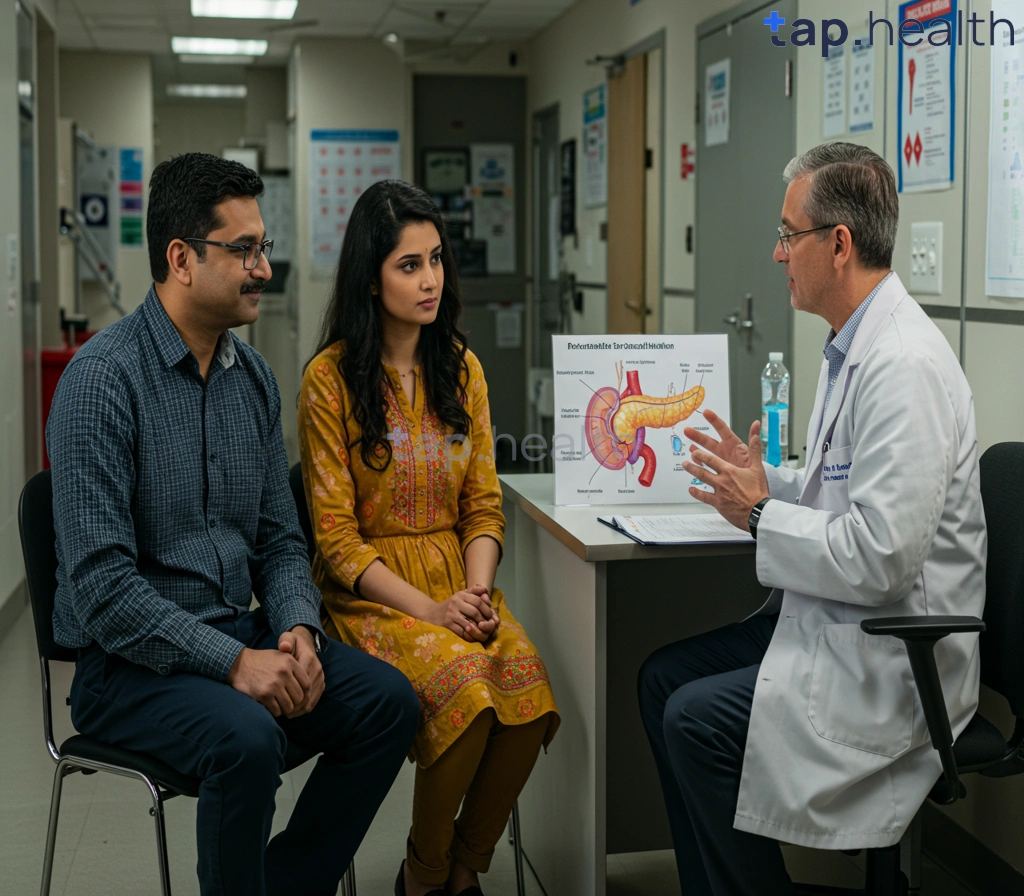Table of Contents
- Understanding Insulin Glargine: A Comprehensive Guide
- Insulin Glargine (Subcutaneous): Dosage and Administration
- How Does Insulin Glargine Control Blood Sugar?
- Glargine vs. Other Insulins: What’s the Difference?
- Managing Side Effects of Subcutaneous Insulin Glargine
- Frequently Asked Questions
- References
Managing diabetes can feel like navigating a complex maze, but understanding your medication is the first step towards taking control. This comprehensive guide focuses on understanding insulin glargine (subcutaneous), a crucial long-acting insulin used by many people with diabetes. We’ll break down how it works, its benefits and potential side effects, and answer your frequently asked questions in plain English. Whether you’re newly diagnosed or a seasoned veteran in managing your condition, this guide will empower you with the knowledge to confidently manage your insulin therapy. Let’s get started!
Understanding Insulin Glargine: A Comprehensive Guide
Insulin resistance is a significant challenge, especially in Type 2 diabetes prevalent across India and tropical countries. Over 80% of individuals with Type 2 diabetes experience this, highlighting the critical need for effective management strategies. Understanding insulin glargine, a long-acting basal insulin, is crucial in this context.
What is Insulin Glargine?
Insulin glargine is a synthetic form of human insulin designed for once-daily subcutaneous injection. Unlike rapid-acting insulins, it provides a steady, extended release of insulin, mimicking the body’s natural insulin production. This consistent level helps regulate blood sugar throughout the day and night, reducing the risk of high blood sugar episodes, particularly overnight. Its extended action simplifies the insulin regimen, making it more manageable for patients.
Benefits and Considerations in Tropical Climates
In hot and humid tropical climates, proper insulin storage is paramount. Always keep your insulin glargine refrigerated to maintain its efficacy. High temperatures can degrade the insulin, making it less effective. Consult your doctor or pharmacist for detailed storage guidelines specific to your region and climate. Remember that consistent blood sugar monitoring remains crucial for effective diabetes management, regardless of the insulin type used. Understanding how to improve insulin sensitivity with diet and exercise can also significantly aid in management.
Practical Tips for Effective Management
Regular monitoring: Regular blood glucose monitoring helps you and your doctor understand how your body responds to insulin glargine and allows for adjustments in dosage as needed. Proper injection technique: Learn the correct injection technique from your healthcare provider to ensure optimal absorption and minimize complications. Dietary considerations: A balanced diet, low in refined carbohydrates and high in fiber, is essential to complement the effects of insulin glargine. Consult your doctor: Regular consultations with your doctor are vital to personalize your treatment plan and address any concerns or side effects. Your doctor can help you manage your diabetes effectively and safely. It’s also important to be aware of potential long-term effects, such as those discussed in our article, Does Insulin Affect Kidneys?
Insulin Glargine (Subcutaneous): Dosage and Administration
Managing diabetes effectively is crucial, especially considering the significant financial burden it places on individuals. In India, for instance, the annual per capita cost of managing diabetes in urban areas is approximately INR 25,000. Understanding your insulin regimen, therefore, is paramount to both your health and your financial well-being. This section focuses on the proper dosage and administration of insulin glargine, a long-acting insulin analog commonly used in diabetes management across India and tropical countries.
Understanding Insulin Glargine Dosage
The dosage of insulin glargine is highly individualized and depends on several factors including your blood glucose levels, overall health, and other medications you may be taking. Your doctor will determine the appropriate starting dose and adjust it as needed based on regular monitoring of your blood sugar. It’s crucial to follow your doctor’s prescribed dosage precisely and not alter it without their consultation. Incorrect dosage can lead to serious complications. Common starting doses range from 10 units to 30 units daily, usually administered once a day at the same time. For more information on insulin dosage in type 2 diabetes, you might find What Is The Average Dose Of Insulin For Type 2 Diabetes? – Tap Health helpful.
Administering Insulin Glargine Subcutaneously
Insulin glargine is administered subcutaneously, meaning under the skin. This is typically done in the abdomen, thigh, or upper arm. Rotate injection sites to prevent lipohypertrophy (thickening of the skin at the injection site). Clean the injection site with an alcohol swab before each injection. Use a new needle each time to maintain hygiene and prevent infection. Proper injection technique is essential to ensure optimal absorption of the insulin. If you are unsure about the correct technique, your healthcare provider or diabetes educator can provide detailed instructions and training. This is particularly important in regions with limited access to healthcare, ensuring self-management skills are well-developed. Remember, consistent and correct administration is key to effective diabetes management.
Seeking Further Guidance
Consistent monitoring of blood glucose levels, along with adherence to your prescribed dosage and administration technique, are fundamental to successful diabetes management. If you have any questions or concerns about your insulin glargine treatment, consult your doctor or a qualified healthcare professional. They can provide personalized guidance and address any specific needs based on your individual circumstances and geographical location. It’s also important to understand the differences in insulin use for those without diabetes; How Much Insulin Can a Non-Diabetic Take? provides valuable insights into this topic.
How Does Insulin Glargine Control Blood Sugar?
Insulin glargine, a long-acting insulin analog, works by mimicking the body’s natural insulin production, helping to regulate blood sugar levels throughout the day. Unlike rapid-acting insulins, it doesn’t cause significant blood sugar drops immediately after injection. Instead, it provides a relatively steady level of insulin for up to 24 hours. This makes it particularly useful for managing basal insulin needs, the insulin required to maintain blood sugar levels between meals and overnight. For individuals in India and tropical countries, where dietary habits and lifestyles can significantly impact blood sugar control, this consistent insulin release is crucial.
Understanding the Mechanism
Insulin glargine’s prolonged action stems from its unique formulation. It forms micro-precipitates under the skin, leading to a slow and continuous release of insulin into the bloodstream. This helps to prevent the wide fluctuations in blood sugar often seen with other insulin types. Maintaining stable blood glucose levels is essential; ideally, pre-meal blood sugar should be between 80–130 mg/dL, and post-meal levels should remain below 180 mg/dL. Achieving these targets is paramount for preventing long-term complications associated with diabetes. Understanding Blood Sugar Levels is key to effective diabetes management.
Practical Implications in Tropical Climates
In hot and humid climates prevalent across many Indian and tropical regions, factors like increased sweating and physical activity can influence blood sugar levels. Consistent insulin delivery from glargine can help mitigate these fluctuations, offering better glycemic control. However, it’s crucial to remember that individual responses to insulin glargine can vary, and regular monitoring of blood sugar levels is essential for optimal management. Sometimes, you might experience unexpected blood sugar spikes in the morning, which require specific management strategies. Consult your doctor or diabetes educator to determine the appropriate dose and schedule for your specific needs. They can help you develop a personalized management plan that accounts for your lifestyle and climate. Regular check-ups and close monitoring are vital for maintaining good health.
Glargine vs. Other Insulins: What’s the Difference?
Understanding the nuances between different insulin types is crucial for effective diabetes management, especially in diverse climates like those found in India and other tropical countries. Insulin glargine, a long-acting insulin analog, differs significantly from other insulins in its action profile. While short-acting insulins like regular insulin work quickly to lower blood sugar after meals, glargine provides a more sustained, basal level of insulin throughout the day and night. This is vital because even when you’re not eating, your body still needs insulin to regulate blood glucose levels, helping maintain a fasting blood sugar within the healthy range (70-99 mg/dL).
How Glargine Differs
Unlike rapid-acting or short-acting insulins used to manage post-meal glucose spikes, glargine aims to prevent high blood sugar levels between meals and overnight. Its prolonged action minimizes the risk of significant blood sugar fluctuations, a particularly important consideration in tropical climates where fluctuating temperatures and lifestyle might affect glucose control. Other insulin types, such as NPH insulin (an intermediate-acting insulin), may have a shorter duration of action, necessitating multiple daily injections to maintain consistent blood sugar levels. This can impact adherence to treatment plans. Understanding the impact of dietary choices, like those discussed in Dairy and Alternatives: Understanding Their Impact on Insulin Response, is also crucial for effective insulin management.
Choosing the Right Insulin
The choice between glargine and other insulins depends on individual needs and preferences, as determined by a healthcare professional. Factors such as your blood sugar levels, lifestyle, and overall health contribute to this decision. Remember, maintaining a healthy fasting blood sugar level is essential to preventing complications associated with diabetes. If your fasting blood sugar consistently falls within the prediabetes range (100-125 mg/dL) or indicates diabetes (126 mg/dL or higher), consult your doctor immediately to discuss the best insulin regimen for you. They can help you understand how glargine’s extended action can benefit your specific needs in the Indian or tropical climate context. It’s also important to understand the potential risks associated with insulin use; for more information, see How Much Insulin is Fatal for a Non-Diabetic? – Tap Health.
Managing Side Effects of Subcutaneous Insulin Glargine
Understanding Common Side Effects
Insulin glargine, administered subcutaneously, is a vital treatment for managing diabetes, including the significant number of gestational diabetes cases in India – estimated at 2.5 million annually. While highly effective, it can cause side effects. Common reactions include injection site reactions like redness, swelling, or itching. Hypoglycemia (low blood sugar) is another potential concern, manifesting as shakiness, sweating, or confusion. Weight gain is also a possibility, requiring careful monitoring of diet and exercise. In tropical climates, paying close attention to injection site hygiene is crucial to prevent infections.
Minimizing Risks and Managing Reactions
Proper injection technique is paramount in minimizing side effects. Learning the correct method from your healthcare provider is crucial. Rotating injection sites helps prevent localized reactions. For hypoglycemia, carrying glucose tablets or a sugary drink can provide immediate relief. Regular blood glucose monitoring is essential for early detection and management of both hypo- and hyperglycemia. Maintaining a healthy diet and engaging in regular physical activity are key to managing weight and overall diabetes control. A healthy diet can also improve insulin sensitivity, as discussed in our article on Effective Anti-Inflammatory Diet Strategies to Boost Insulin Sensitivity.
Seeking Professional Guidance
If you experience severe or persistent side effects, such as severe allergic reactions or uncontrolled hypoglycemia, seek immediate medical attention. Consult your doctor or diabetes educator to discuss any concerns and develop a personalized management plan. Remember, proactive management and open communication with your healthcare team are key to successful treatment and a healthier life. In India and other tropical regions, access to reliable healthcare and diabetes education is crucial; don’t hesitate to utilize available resources. It’s also important to be mindful of the impact of your diet on insulin resistance. Learn more about the Effects of Ultra-Processed Foods on Insulin Resistance.
Frequently Asked Questions on Insulin Glargine (Subcutaneous)
Q1. What is insulin glargine and how does it work?
Insulin glargine is a long-acting insulin analog that provides a steady release of insulin into your body for 24 hours, mimicking your body’s natural insulin production. This helps to manage blood sugar levels throughout the day.
Q2. What are the benefits of using insulin glargine, especially in tropical climates?
Insulin glargine simplifies diabetes management by requiring just one daily injection. Its long-acting nature is particularly beneficial in hot climates where maintaining the insulin’s cold storage can be challenging.
Q3. What are the potential side effects and how can they be managed?
Common side effects include injection site reactions and hypoglycemia (low blood sugar). These can be managed by rotating injection sites, regularly monitoring blood sugar levels, and making appropriate dietary adjustments. Always consult your doctor.
Q4. How is insulin glargine administered and what is the recommended dosage?
Insulin glargine is administered subcutaneously (under the skin) via injection. Dosage is personalized and determined by your doctor based on your blood glucose levels and overall health.
Q5. What blood sugar levels should I aim for, and how often should I consult my doctor?
Aim for pre-meal blood sugar levels between 80–130 mg/dL and post-meal levels below 180 mg/dL. Regular consultations with your doctor are essential for personalized treatment and to address any concerns.
References
- A Practical Guide to Integrated Type 2 Diabetes Care: https://www.hse.ie/eng/services/list/2/primarycare/east-coast-diabetes-service/management-of-type-2-diabetes/diabetes-and-pregnancy/icgp-guide-to-integrated-type-2.pdf
- Diabetes Mellitus: Understanding the Disease, Its Diagnosis, and Management Strategies in Present Scenario: https://www.ajol.info/index.php/ajbr/article/view/283152/266731





